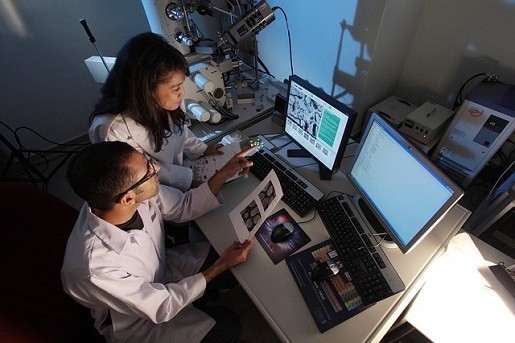New research uses hyperspectral imaging to see nanoparticles in tissue samples

Technology like this has vast implications for the cosmetics and personal care industry. “Nanomaterials have been used for decades in the dermatology consumer space, ranging from sunscreens to anti-aging cosmetics to antimicrobial dressings,” says co-author Adam Friedman, Associate Professor of Dermatology and Director of Translational Research at the George Washington School of Medicine and Health Sciences, in a SUNY Polytechnic Institute item about the work.
“Our ability to dispel concerns regarding safety has been limited due to the constraints of our imaging approaches, which is why the publication of this now validated technique is so important,” he adds.
New and different
Sara Brenner, MD, MPH and researchers from SUNY Polytechnic Institute, George Washington School of Medicine and Health Sciences, and SUNY Stony Brook have hit upon an alternative to electron microscopy.
“The current gold standard for visualization of nanoparticles in tissue samples is electron microscopy, which is highly time- and resource-intensive,” says Brenner, Assistant Professor of Nanobioscience and Assistant Vice President for NanoHealth Initiatives at SUNY Poly.
The article, Hyperspectral imaging of nanoparticles in biological samples: Simultaneous visualization and elemental identification, outlines the alternative—how enhanced darkfield microscopy (EDFM) and hyperspectral imaging (HSI) can be used to see nanoparticles distributed in tissue samples.
This technique seems to be valuable in the academic space as well as commercially. “Availability of an alternative, rapid, and cost-effective method would relieve this analytical bottleneck, not only in nanotoxicology, but in many fields where nanoscale visualization is critical,” notes Brenner.
She explains that “the time and cost burdens associated with nanomaterial analysis and characterization in complex media are hindering progress in many research disciplines.”
More to come
The researchers used their new method to document the presence and distribution of nanoparticles; and then substantiated those results with traditional testing methods. “The system has great versatility and high practical utility – we’ve only begun to scratch the surface of what it can do,” says Brenner.
Her team is already at work on further research with other nanomaterials and on a variety of exposure scenarios, e.g. occupational and environmental exposure to nanoparticles.
















